Investing in something that costs a lot of money is often a long process that can cause distress and perhaps sleepless nights. You’re actually excited, but subconsciously, doubts can creep in.
This is when most people have trouble sleeping.
It could be an imminent car purchase with a lot of money involved. Or it could be all those hundreds of thousands you have to pay for a new apartment. Many have butterflies in their stomachs, even though they are at the end of a process that has taken months. Maybe years.
But these doubts often disappear the first time you set off in your new car or close the door behind you in your new home.
Anyone who has spent a lot of money on hi-fi will recognise the process of doubt and anticipation. Especially if we’re talking about the expensive end of the scale, where the purchase sum can be equivalent to the price of a new car. Buying a handmade speaker for a five-figure sum is something few people do often, but when it happens it’s usually the result of a long process:
Several visits to different hi-fi shops, reading an endless series of reviews, and then hopefully landing on just the right speakers.
Hopefully, because there’s always room for a little doubt. There were so many other good candidates, right?
There’s not much room for doubt when we’re talking about the KEF Reference 3 Meta. In my experience, it’s among the best high-end speakers we’ve tested in this price range. In fact, they’re so good that for many they’d be a better choice than the larger and – much – more expensive Reference 5 Meta we tested recently.
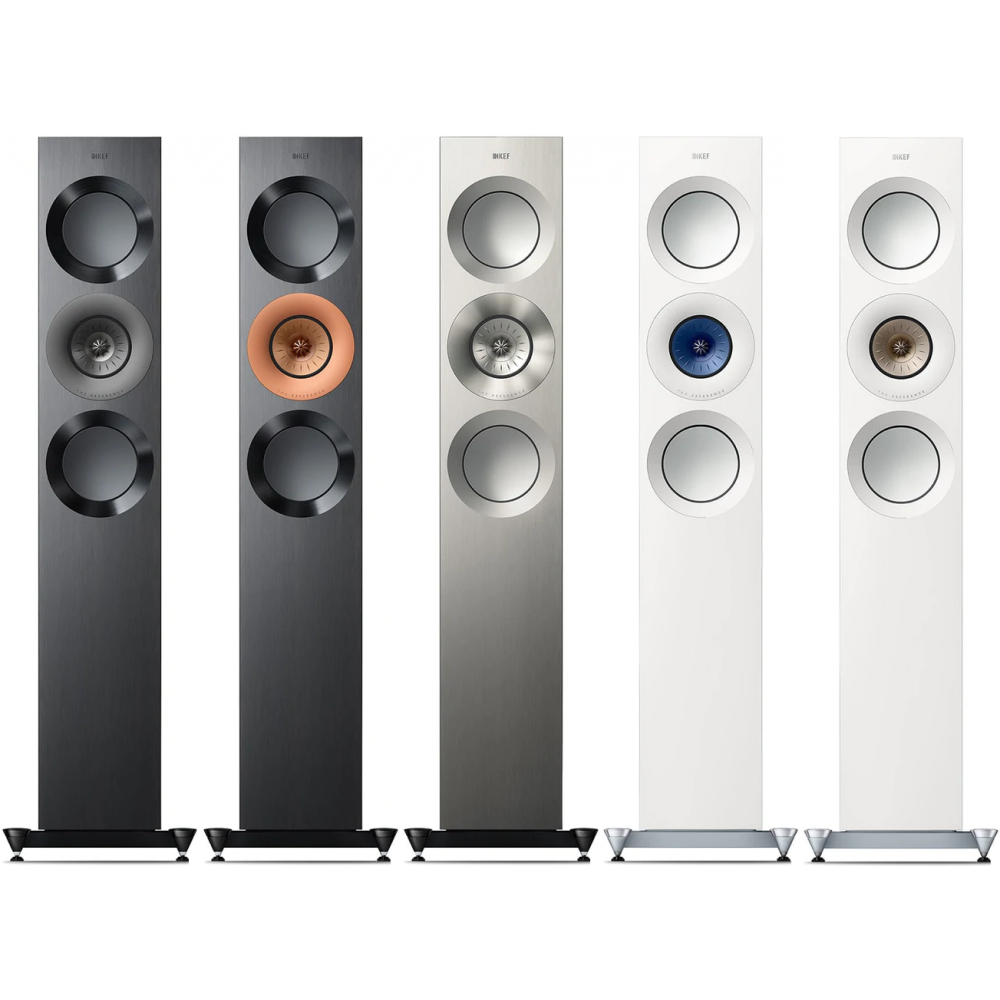
The speakers are a smaller version of the Reference 5 Meta, but completely identical in terms of technology. The Reference 3 Meta speaker has two 16.5 cm woofers against the 5 Meta’s four, in a shorter cabinet, but with the same internal reinforcement, damping and exactly the same quality in every way.
It features KEF’s 12th generation Uni-Q coaxial driver with the tweeter in the centre of a midrange unit. It also features KEF’s MAT technology implemented in the new Uni-Q unit, which has been developed using finite element analysis to optimise the damping of resonances at low frequencies.
It works beyond expectations.
MAT or META
The new Uni-Q unit is used in all Meta versions of the new Reference series. As with the same unit in Reference 5, in short it involves a new surround suspension, a new voice coil system and new damping in the tweeter-midrange space. On the back of the unit is the special plate with Metamaterial Absorption Technology – MAT.
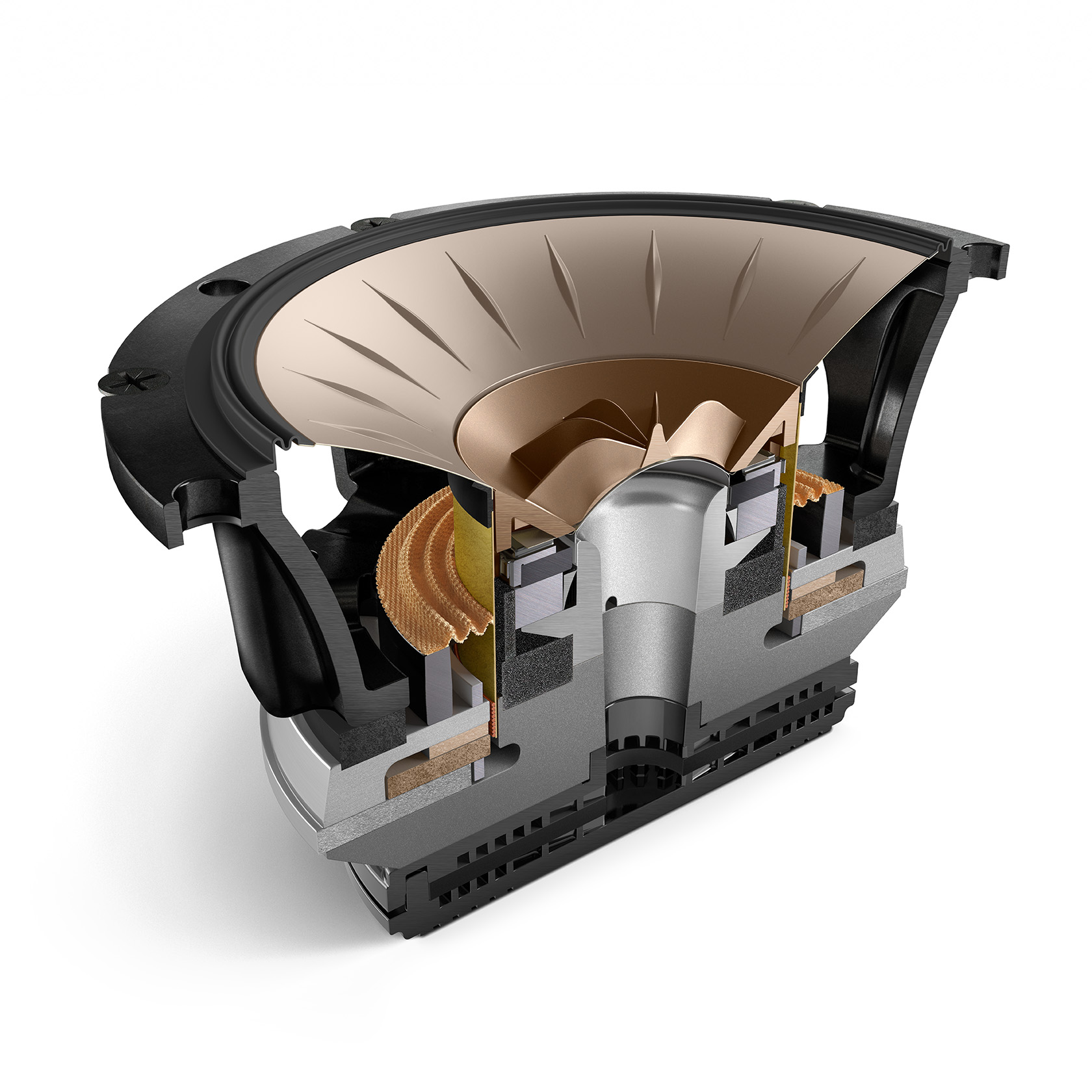
The round plate behind the Uni-Q unit has a milled labyrinth pattern that absorbs different frequencies and dampens resonances. KEF calls it an acoustic black hole that eliminates 99 percent of unwanted frequencies. Mainly in the range 620 Hz – 40 kHz.
The two 16.5cm woofers flanking the Uni-Q unit have a slightly curved aluminium diaphragm cast in one piece. The two bass reflex ports on the rear can be adjusted for length and power. The speakers come with bass reflex tubes in two different lengths, so the bass can be attenuated if it gets too much for you.
95 percent Reference 5 Meta
Since the design is almost identical to the Reference 5 Meta, I’d rather try to describe the differences between the 5 and the 3.
The two most obvious differences are in sound pressure and bass extension. The larger Reference 5 Meta reproduces deep bass with greater authority, and more easily fills a large room with sound pressure. The smaller Reference 3 Meta otherwise performs 95 percent identically to the big 5, but there are also some nuance differences that may be worth noting.
The speakers’ sensitivity of 86 decibels is 2 decibels lower than the 5’s, but that didn’t affect a 60-watt-per-channel Hegel H95 at all, which played with surprisingly good control over the speakers. That tells us two things: The Hegel amp is damn good for the price, and the speakers are relatively easy to control, even for a 60 watt amp.
I didn’t have the 70 watt powerful V 70 SE from Octave with vacuum valves available. Neither did the muscular Rotel Michi X5 at 2 x 350 watts – but I did have a McIntosh MA9500. It’s an updated version of the MA9000 with improved circuitry and a new DAC module – and 300 unencumbered watts available.
It’s safe to say that it brought the speakers to life in a way that the little Hegel amp couldn’t, but then again it does cost 10 times as much.
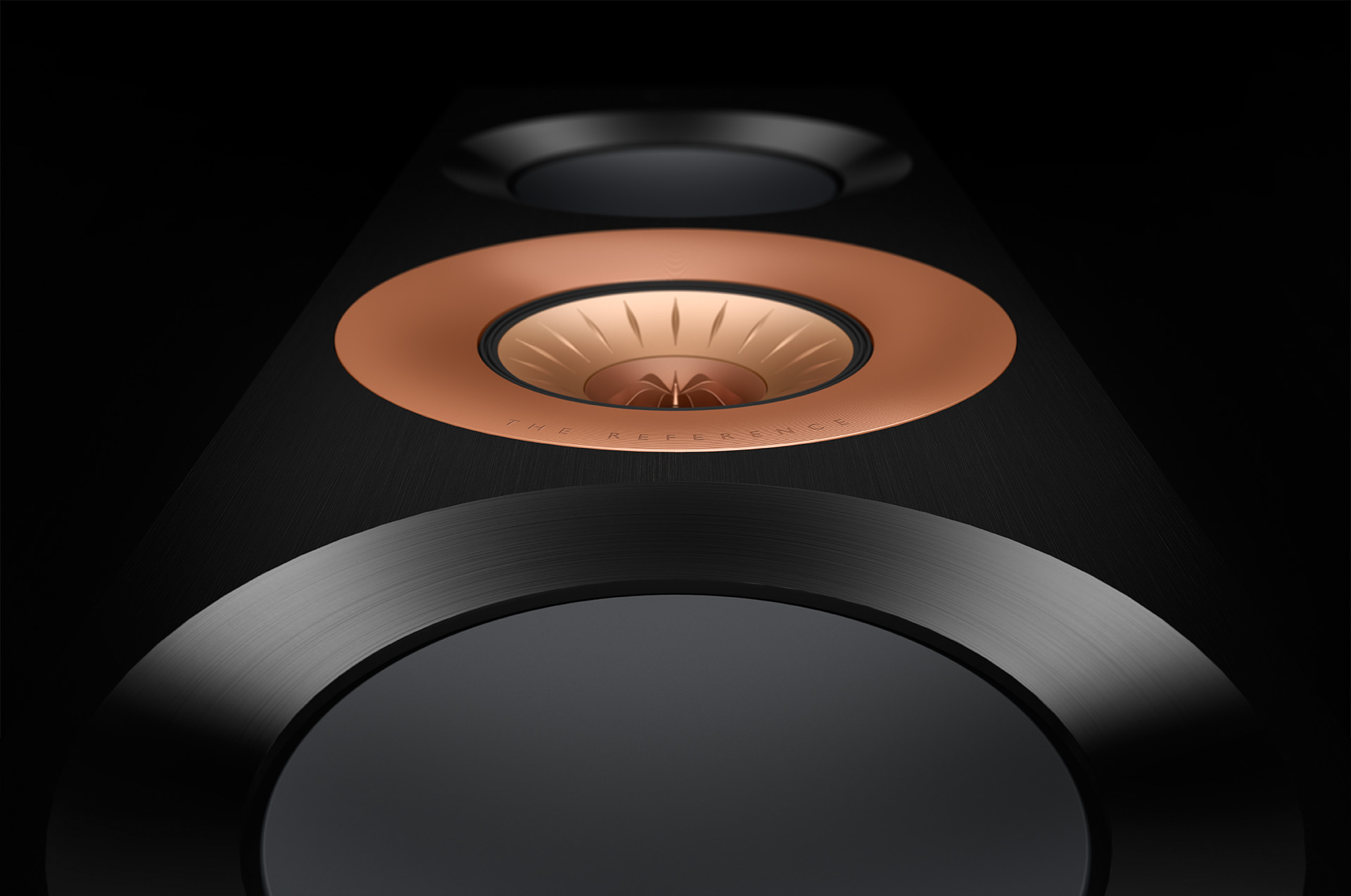
Of course, I also had to hear the overture from Puccini’s La Boheme on Reference 3 Meta. It was just as formidably beautiful as with the Reference 5 Meta. The bass from the wildest strings had the same massive power, and even with a dizzying sound pressure there was full control throughout. You could hear young Luciano Pavarotti moving around the stage in a huge three-dimensional soundscape, following the movements between the speakers. You could almost feel the atmosphere of the day of the recording. At the same time, it was never harsh, hard or boring to listen to.
All in all, listening to opera through KEF speakers was an exhilarating experience. Especially because they have the coveted ability to not get in the way of the music.
The same live recording with the Keith Jarrett trio Up For It that I tested the Reference 5 Meta with also sounded rich and engaging here. The nuances of sound from the double bass were sharply defined, and it’s rare that I hear the sound of Jack DeJohnette’s drums as well-focused and dynamic as they are here.
The deep bass on James Blake’s Limit To Your Love can bring most speakers – and amps – to their knees in no time. Just turn up the volume and wait for the bass units to pop out of the cabinets. Or for the amp to melt. But with the powerful McIntosh amp on the Reference 3 Meta, it’s just a matter of hanging on tight.
You can feel the deep tones digging under your skin and setting your nerves on alert. The speakers have remarkable control in the bass, most speakers will start to lose grip at some point, but here there’s steel control even under sound pressure that might scare the hell out of purgatory.
But it’s not just brute muscle and bass punch that can be highlighted as the speakers’ strengths. They also deliver the same open and focused soundstage as the big Reference 5 Meta – and KEF Blade 1 Meta. With an exceptionally resolved and refined soundstage that’s smooth as silk all the way up the frequency range.
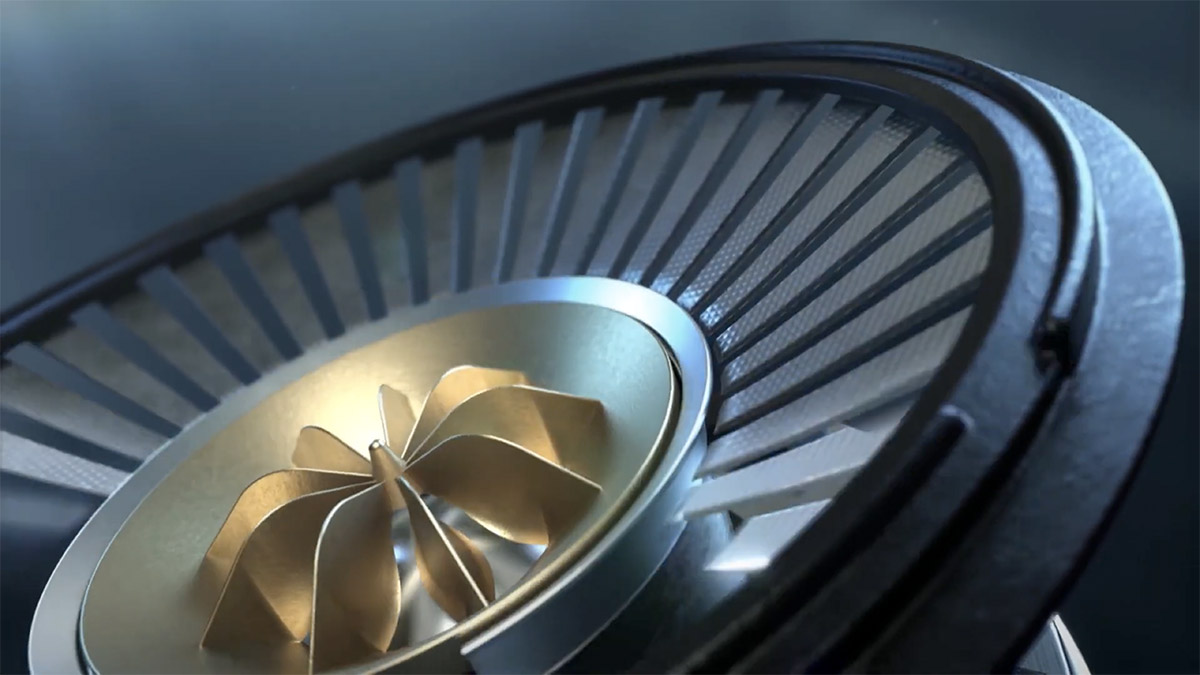
Competitors
The Reference 3 Meta is by no means without competition in this class. The Sonus faber Olympica Nova III is one of the best-looking and best-playing speakers we’ve tested. They have much of the same warm richness and resolution, but not quite the same dynamics as the KEF speakers. The even more expensive Bowers & Wilkins 803 D4 are among our favourite speakers, but they’re more in the same class as the Reference 5 Meta. The colourful Focal Sopra N°2 is perhaps the closest you can get to the qualities of the Reference 3 Meta, and certainly worth comparing with.
Conclusion
The smaller Reference 3 Meta is one of the best speaker purchases in this price range. They deliver on everything, and perform so closely to the larger Reference 5 Meta that we have no hesitation in calling them a bargain. They’re easier to place in the room, make a significantly smaller dent in the budget and are fully on par with more expensive speakers to which it’s not natural to compare them. A set of KEF Reference 3 Meta could be a speaker purchase that lasts a lifetime, they are that good.

We think
Detailed, open and transparent sound with huge amounts of dynamics. As good as the much more expensive Reference 5 Meta in almost all areas. Very good buy in the high-end class. Does not quite reach the deep bass.
14000 €
Specifications
- Bass: 2 x 16.5 cm aluminium diaphragm
- Midrange: 12.5 cm aluminium
- Tweeter: 2,5 cm aluminium w. MAT
- Sensitivity: 86 dB
- Impedance: 4 Ohm
- Frequency range: 43-35 Hz ±3 dB
- Crossover frequency: 450 hz, 2100 hz
- Max. load: 300 W
- Recommended amplifier power: 50-300 w
- Dimensions/weight (cm/kg): 120 x 32.3 x 46.7 / 51.3
- Colours: Black, white, walnut/silver grey
- Web: kef.com
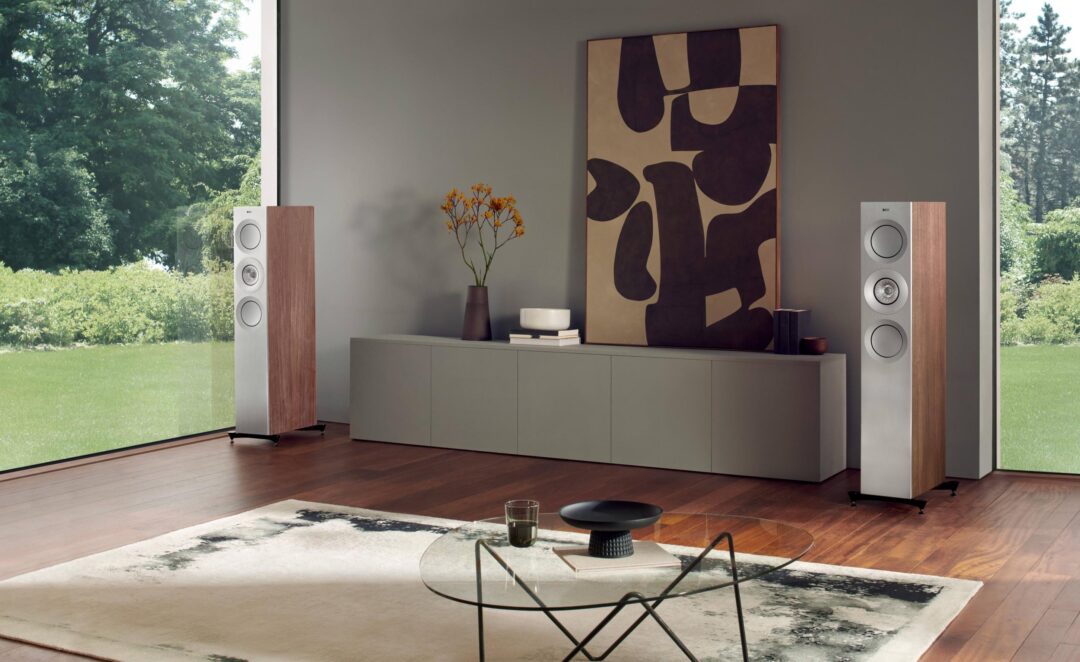

Thanks for the great review of the Kef Reference 3 Meta speakers. I recently purchased a pair in black and copper and they are wonderful! I’ve also got the new McIntosh MA9500 integrated amp and you are correct in every way with this review.
I have also purchased black and grey pair of Reference 3 Metas from my local dealer (BEK HiFi) month ago. Let’s just say I have had more than 30 different speaker models in my space through out the years and KEFs are far superior to anything I have ever heard.
The only upgrade will be to Blades Meta in Ferrari Red!
They are being driven with Simaudio mono blocks (650W a channel) and Simaudio Pre amp. All cables from Cardas Clear Beyond line. Great combo. Game over.
I ordered a pair of black and copper. How long did it take for you to get them? Can’t wait.
I got them instantly. US distribution had one pair in stock because one of the dealers cancelled their order. Erik from BEK HIFI simply got me that pair….super happy so far!
I did get my Kef Meta 3 this week, I went from Kef XQ40 – To R.11 and this week to Meta 3. this is just fantastic , the best speaker I ever heard!
I do use Hegel 590 and in cables Nordost Heimdal II, and Nordost Blue Heaven / Red dawn ++
I love Kef, and Meta 3 is just … Magic
Tengo un Naim 250Dr, andara bien con estas kef ?